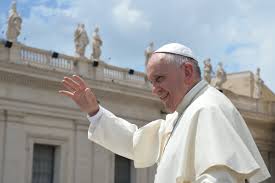
Introduction by Bill Benzon
This month I've decided to turn things over to my good friend Charles Cameron, whom I've known for somewhat over a dozen years, though only online. He's a poet and a student of many things, most recently religious fundamentalism and its contemporary manifestations in terrorism. He characterizes himself as a vagabond monk and he blogs at Zenpundit and at Sembl. When he was eleven he applied to join an Anglican monestery and, while they didn't take him in, that act did bring him to the attention of the remarkable Fr. Trevor Huddleston, who became his mentor for the next decade. Thereafter Cameron explored Tibetan Buddhism, Hindu mysticism, and Native American shamanism. He's been around.
But it's his connection with Trevor Huddleston that got my attention, for Huddleston managed to broker a gift between two trumpet-player heroes of mine. At one point in his career he was in South African, where a young Hugh “Grazin in the Grass” Masekela was one of his students. On a trip to America, Fr. Huddleston met Louis Armstrong and got him to give Masekela a trumpet.
To the bridge builders…
Pontifex as Bridge Builder: the Encyclical Laudato Si'
by Charles Cameron
I propose that in his recent encyclical Laudato Si', Pope Francis is exercising his function as Supreme Pontiff, or @pontifex as he calls himself on Twitter – a pontifex being literally a bridge builder. It is my contention that in his encyclical he bridges a number of divides, between Catholic and Orthodox, sacramental and social, liberal and conservative, religious and scientific, even Christian and Muslim, traditional and of the fast advancing moment, in a manner which will impact our world in ways yet unforeseen.
It is my contention, also, that his pontificate provides the third step in a momentous journey.
The first step, as I see it, was taken by Christ himself in the Beatitudes – blessed are the poor in spirit, they that mourn, the meek, the merciful, the pure in heart, the peacemakers – and in his doctrine of forgiveness, not once only but a myriad of times. The second was taken by Francis of Assisi, in his Canticle of Creatures – praised be you, my Lord, with all your creatures, especially Sir Brother Sun, through Sister Moon and the stars, praised be You, my Lord, through our Sister Mother Earth, who sustains and governs us.. blessed those who endure in peace.. – and in his crossing the front lines of war during the crusades to greet in peace the Sultan Malik Al-Kamil in Damietta, Egypt. And in taking the name Francis, in washing and kissing on Maundy Thursday the feet of both male and female, Christian and Muslim juvenile offenders in prison, and in issuing this encyclical, I would suggest Pope Francis, born Jorge Mario Bergoglio, is taking the third step.
The line, the transmission, is of sheer humility. It begins with the Founder of the line, Christ himself, lapses, which all high inspirations must as routine replaces charisma, only to emerge brilliantly a millennium later in the saintly maverick, Francis, lapses again though still fermenting in the imagination of church and humankind, and now at last shows itself once more, in that most unexpected of places: in the heart of the bureaucracy, at the head of the hierarchy, atop the curia, simple, idealistic, practical – a pontifex building bridges.
Read more »
The sun burnishes the walls every day for just over three quarters of an hour out of the fourteen I spend at my shop; the mannequin assumes a buttery glow then, her organza scarf liquefies in the golden light. The CD skips at mi amour every time but this hiccup is also golden and otherworldly. The sun lifts my surroundings, the merchandise, the credit card machine, the shelves, during this portion of time in a grandiose gesture; it’s our secret— the book I’ve been writing for years has a life somewhere and this is a furtive daily reminder. I’d rather not have customers at a moment so personal in a public place; I’m at a shopping mall, selling jewelry and shawls.
